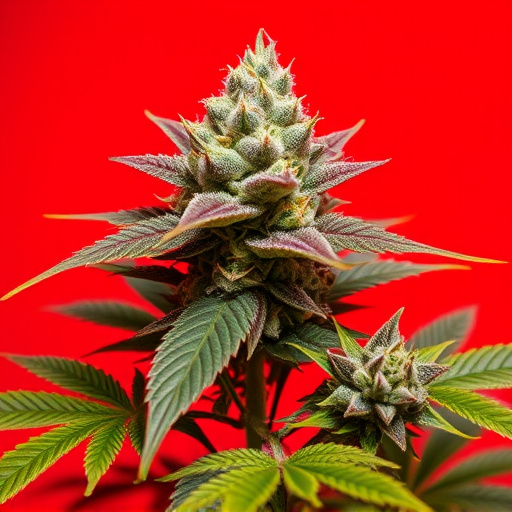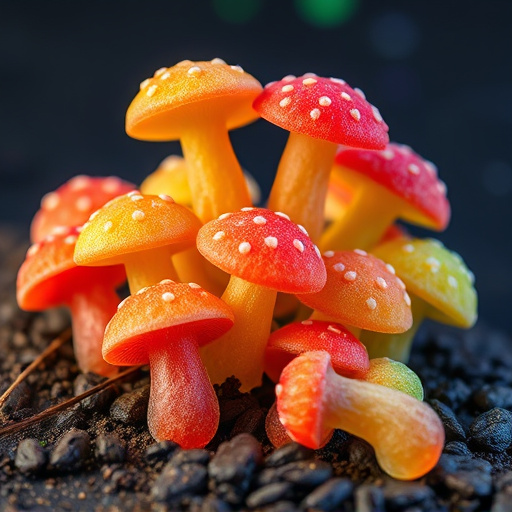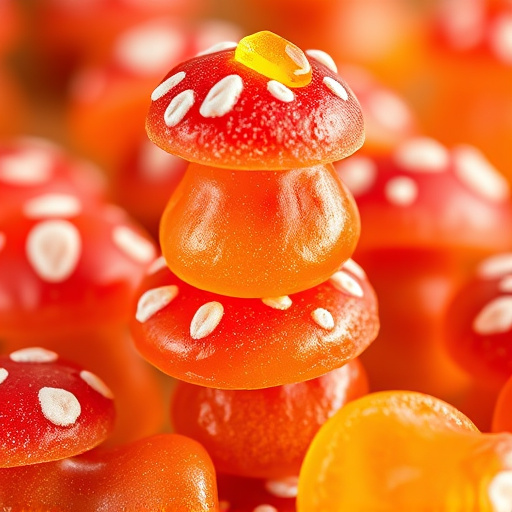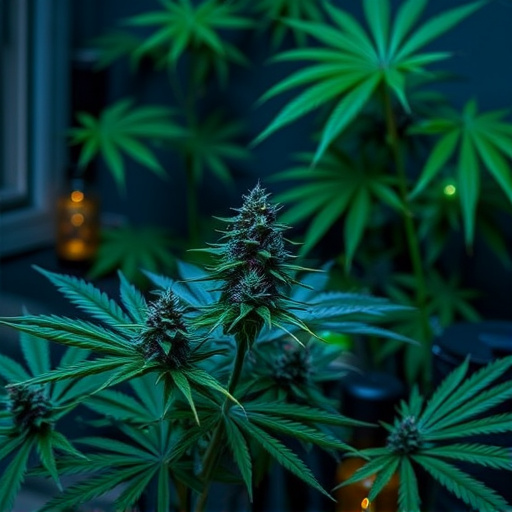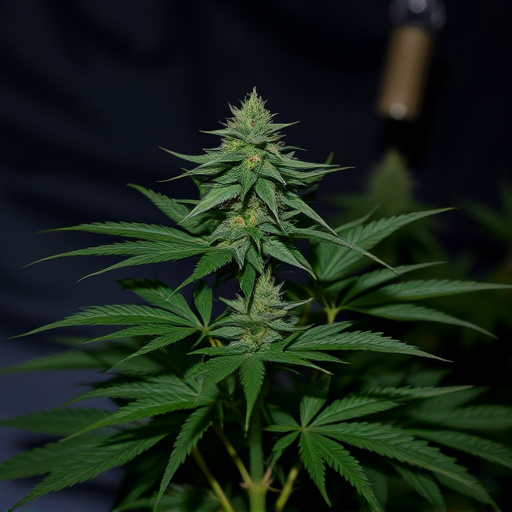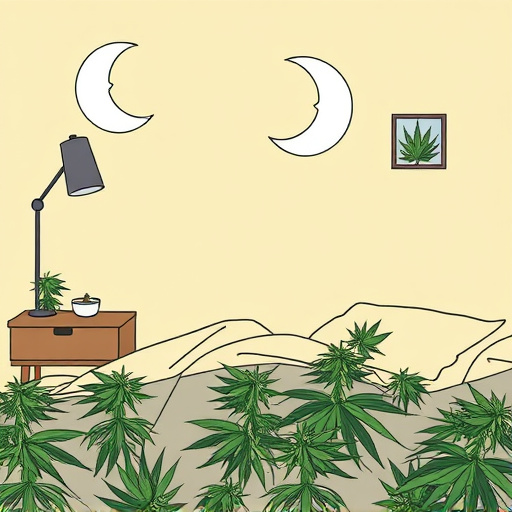Cannabis strains marketed as sleep aids offer potential benefits but carry significant risks, especially for new users and young adults with mental health conditions. Short-term effects include dizziness, anxiety, and memory impairment, while long-term use can lead to respiratory issues and impact mental health. High THC content amplifies these dangers. Individuals with pre-existing conditions should consult healthcare professionals before using cannabis for insomnia, considering unpredictable potency levels, potential interactions with medications, and the risk of building tolerance. Starting with low doses of relaxing Indica strains from reputable sources and taking regular breaks can help mitigate risks.
“Cannabis flower, often celebrated for its medicinal properties, especially in treating insomnia, carries inherent risks. This article delves into the potential side effects of cannabis consumption, focusing on the unique risks associated with different strains. We explore how varying cannabis compositions can impact sleep and overall health. Furthermore, we offer crucial precautions to mitigate dangers, ensuring safe usage of cannabis strains for insomnia. By understanding these risks and preventative measures, consumers can make informed decisions.”
- Potential Side Effects of Cannabis Flower Consumption
- Risks Associated with Different Cannabis Strains for Insomnia
- Mitigating the Dangers: Safe Usage and Consumer Precautions
Potential Side Effects of Cannabis Flower Consumption
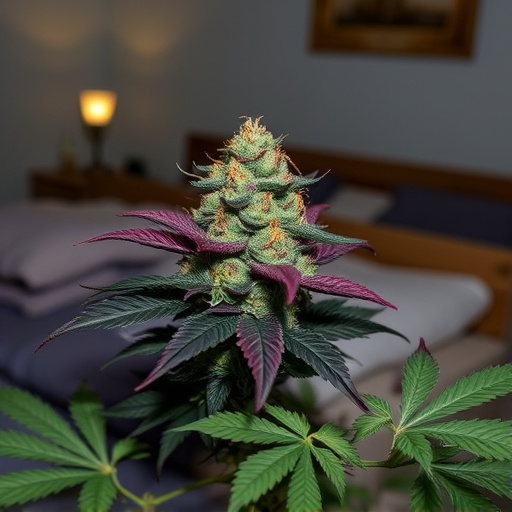
Cannabis flower, while often sought after for its potential therapeutic benefits, including its usage as a sleep aid with specific cannabis strains for insomnia, is not without risks and side effects. Short-term consumption may lead to issues like dizziness, anxiety, paranoia, and short-term memory impairment, especially in individuals new to the substance or those consuming high doses. These effects can be more pronounced in certain cannabis strains known for their higher THC (tetrahydrocannabinol) content, which is the primary psychoactive compound responsible for these immediate impacts.
Long-term use of cannabis flower poses additional risks. Regular consumption has been linked to potential respiratory issues due to the inhalation of smoke or vapor, and there are concerns about its impact on mental health, particularly in adolescents and young adults, where it may increase the risk of psychosis or exacerbate existing conditions. Moreover, cannabis can interact with certain medications, potentially altering their effectiveness or causing unexpected side effects. As such, it’s crucial to consult healthcare professionals before incorporating cannabis into any sleep or wellness routine, especially for those managing pre-existing medical conditions.
Risks Associated with Different Cannabis Strains for Insomnia
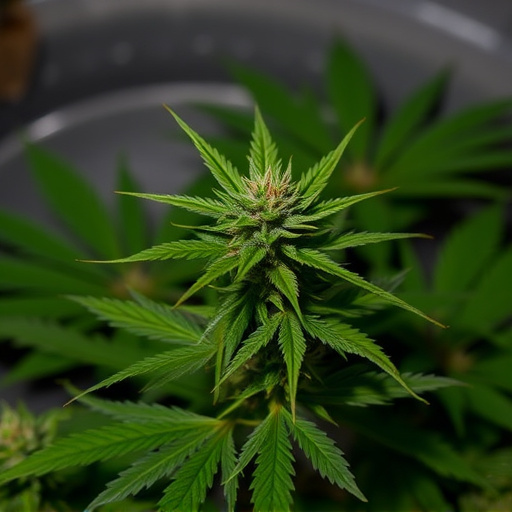
Cannabis strains marketed for insomnia often come with specific risk factors. While some individuals may find relief from sleep disturbances, the effects can vary greatly depending on the strain and individual biochemistry. Certain cannabis strains known for their sedative properties, such as Indica dominant varieties, may induce drowsiness but can also cause next-day grogginess or even paranoia in some users. These risks are exacerbated by higher THC (tetrahydrocannabinol) content, which is often found in modern commercial strains.
Additionally, the interaction between cannabis and pre-existing mental health conditions should be considered. Studies suggest that individuals with a history of anxiety, depression, or psychosis may experience adverse effects from cannabis use, including heightened anxiety, mood disturbances, or even psychotic episodes. As such, it’s crucial for those exploring cannabis strains for insomnia to consult healthcare professionals to assess potential risks and determine the most suitable approach for their needs.
Mitigating the Dangers: Safe Usage and Consumer Precautions

While cannabis has gained popularity for its potential therapeutic benefits, especially in treating insomnia and other sleep disorders, it’s crucial to acknowledge that safe usage and consumer precautions are paramount to mitigating risks. One of the primary dangers associated with cannabis flower is the unpredictable potency levels, which can vary significantly between strains and even within the same batch. This variability can lead to adverse effects such as increased anxiety, paranoia, or disorientation, especially for first-time users or those consuming higher-than-recommended doses.
To ensure safe usage, consumers should start with low doses and gradually increase as needed. Opting for cannabis strains known for their relaxing properties, such as Indica variants, can be beneficial in managing insomnia. Additionally, choosing reputable sources that provide clear labeling and third-party testing ensures the quality and consistency of the product. Educating oneself about potential interactions with medications or other substances is also essential to avoiding unexpected reactions. Regular breaks from cannabis use can help prevent tolerance buildup and reduce risks associated with prolonged exposure.
While cannabis flower offers potential benefits, especially for managing insomnia through specific strains, it’s crucial to approach its use with caution. The risks associated with consumption, including side effects and strain-specific dangers, cannot be overlooked. By adopting safe usage practices and taking necessary precautions, individuals can mitigate these risks. Further research is needed to fully understand cannabis’s therapeutic potential, emphasizing the importance of responsible consumption and informed decisions when exploring cannabis strains for insomnia or any other purpose.
